

This paper, with its unique research perspective, delves into the innovative applications and current development status of advanced materials in aero - engines, covering a variety of new - type materials ranging from ceramic - matrix composites to resin - matrix composites. The article not only reviews the research progress of high - temperature and medium - to - low - temperature materials, but also particularly highlights the potential of material technology in enhancing engine performance, durability, and stealth capabilities. The innovation lies in the combination with the actual requirements of aero - engine models, providing a comprehensive technical analysis of material development and application as well as a look into future trends. By introducing advanced coating technologies, metallic materials, and composite materials, this thesis provides a solid scientific basis for the performance improvement of aero - engines.

Every leap in aircraft performance is essentially inseparable from the contributions of aero - engine technology, and the development of advanced materials is the technical foundation for the new generation of high - thrust - to - weight ratio engines. This paper summarizes the research progress of advanced materials for aero - engines, reviews the research and application status of high - temperature and medium - to - low - temperature materials such as ceramic - matrix composites, carbon / carbon composites, intermetallic compounds, high - temperature protective coating materials, high - temperature stealth coating materials, advanced titanium alloy materials, and resin - matrix composites, analyzes the existing problems, and in combination with the current aero - engine models under development and the material requirements for the next generation of advanced aero - engines, elaborates the research priorities of advanced materials for aero - engines.

As the core power unit of an aircraft, the aero - engine provides the power for the aircraft. The requirements for the materials are becoming increasingly stringent. The research on high - temperature, high - strength, and low - density materials is constantly providing the power needed to accelerate under the harsh conditions of high temperature, high pressure, and high - speed rotation. Figure 1 lists some of the advanced materials used at different temperatures.

Figure 1 Advanced Materials for Service at Different Temperatures
Long - term and repeated service has a decisive impact on the performance, safety, and reliability of aircraft. The level of development of aero - engines has become an important indicator for measuring a country's level of military equipment, scientific and technological industrial strength, and comprehensive national power. The Integrated High - Performance Turbine Engine Technology (IHPTET) program and the Advanced Core Military Engine (ACME) program implemented by advanced aero - engine countries have made great progress in high - thrust - to - weight ratio, low - fuel - consumption rate, and low - cost aero - engines [1 - 2].
Materials are the material basis for the development of aero - engines and one of the key factors determining the modernization level of aero - engines. To achieve mature application, advanced new materials for aero - engines must go through the entire process of material research and development as well as application research. Through the assessment and verification in the actual service environment, and with stable and reliable performance, that is, the technological maturity must reach a certain level, the aero - engine can be put into service. Materials determine the performance, durability, maintainability, and cost of aero - engines [3].
In recent years, the new generation of aero - engines has put forward higher requirements for pressure ratio, thrust - to - weight ratio, and turbine inlet temperature. The performance indexes of aero - engines have been greatly improved, which makes the service conditions of materials more and more severe. Therefore, higher and more stringent requirements are put forward for materials. The development cycle of advanced materials for aero - engines is very long. In order to ensure the progress of the model development, it is often necessary to carry out key technology breakthroughs in advance. At present, the turbine inlet temperature of the engine with a thrust - to - weight ratio of 10 has reached 1850K - 1900K, and the turbine inlet temperature of the engine with a thrust - to - weight ratio of 12 - 15 exceeds 2000K [4 - 5]. In order to meet the requirements of advanced aero - engines for materials, it is necessary to conduct research and analysis on the development of advanced materials for aero - engines, and to understand the research and application of advanced materials at home and abroad, so as to provide technical support for the design units of aero - engine hosts and point out the direction for the further development of material research and development units.
Therefore, this paper analyzes and summarizes the domestic and international research progress and application of advanced materials for aero - engines in recent years, and puts forward development suggestions in combination with the requirements of aero - engine models and the materials for the next generation of advanced aero - engines.

1.1 High - Temperature Materials
In order to further enhance the performance of materials and meet the increasingly stringent requirements of aero - engine components, material scientists have begun to further explore the performance of materials by deeply studying the traditional manufacturing processes of high - temperature alloys. For example, single - crystal casting technology is used for turbine blades, and powder metallurgy technology is used for turbine discs. After applying these technologies, the performance of traditional high - temperature alloys has been greatly improved, providing a basis for the development of third - generation aero - engines. However, the performance of materials has approached the limit. To meet the requirements of the new generation of advanced aero - engines, traditional high - temperature alloys can no longer meet the development of advanced engines. It is urgent to carry out research on new materials and technologies, and to develop new - type materials with high specific strength, high specific stiffness, oxidation resistance, and corrosion resistance [5].
1.1.1 Ceramic - Matrix Composites
Ceramic - matrix composites (CMCs) can operate at temperatures as high as 1650℃. Figure 2 compares the performance of CMCs with that of nickel - based superalloys. Compared with high - temperature alloys, CMCs have lower density, better oxidation resistance, and higher temperature - bearing capacity. As a material for hot - section components of engines, CMCs can not only achieve weight reduction, lower fuel consumption, and higher turbine inlet temperatures, but also meet the stress requirements under extreme high - temperature conditions and extend the service life of components [7].
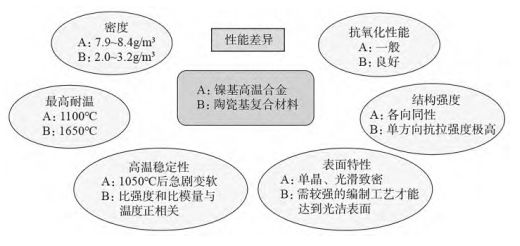
Figure 2 Comparison of the Performance of the Two Materials
Current Applications and Development of Ceramic - Matrix Composites
Applications in Aero - Engines
Composition and Advantages of CMCs
Fabrication Process of CMC Components

Figure 3 Fabrication Process Flowchart of Ceramic - Matrix Composite Components [15]
At present, carbon - fiber - reinforced silicon - carbide - based ceramic - matrix composites are widely used due to their superior comprehensive performance. However, when serving for a long time in the gas environment, they need to rely on the environmental thermal - barrier coating technology. The environmental barrier coating has a dense structure, with high melting point, good surface stability, and low oxygen permeability. In addition to resisting environmental corrosion, it also has the functions of hindering and healing cracks and pores [17 - 18]. Compared with the industrialization technology of continuous - fiber - reinforced silicon - carbide - based ceramic - matrix composites mastered by a few countries such as the United States, China still has gaps in the forming process and high - performance fiber - making technology of ceramic - matrix composites, which limits the mass production of ceramic - matrix composites.
1.1.2 Carbon/Carbon Composites
Carbon/carbon composites are a new type of high - temperature material, which have low density (theoretical density is 2.2 g/cm²), low thermal expansion coefficient, high strength, and good high - temperature resistance. They also have the characteristic that their mechanical properties increase with the rise of temperature. Applying them to aero - engines has the advantages of improving the thrust - to - weight ratio/power - to - weight ratio of engines and the working temperature of hot - section components [19].
However, carbon will oxidize in air at 370℃, in water vapor at 650℃, and in CO₂ at 750℃ [20]. Oxidation makes the structure of carbon/carbon composites loose and discontinuous, thus greatly reducing their mechanical properties [21]. The poor oxidation resistance limits its application, so anti - oxidation technologies such as coating and matrix modification have been applied to carbon/carbon composites. At present, the anti - oxidation technology of foreign countries within a certain temperature range has been relatively mature, especially the multi - layer coating technology has met the anti - oxidation requirements above 1700℃.
The nozzle and afterburner nozzle of the F100 aero - engine are both made of carbon/carbon composites. In recent years, with the development of carbon/carbon composite technology, the American LTV company has produced an integrated carbon/carbon composite turbine blisk and completed the ground overspeed test. In addition, Russia, Germany, and France have also produced components such as turbine rotor outer rings and fuel rods made of carbon/carbon composites [19].
1.1.3 Intermetallic Compounds
Intermetallic compounds are a new type of high - temperature - resistant material, which are connected by covalent bonds between metal elements or between metal and metalloid elements, and have good high - temperature resistance, wear resistance, and oxidation resistance [22]. At present, the most obvious application trend in aero - engines is the Ti - Al - based intermetallic compounds.
In the Ti - Al - based intermetallic compounds, the main research focuses on Ti₃Al alloy, TiAl alloy, and Ti₂AlNb alloy. Among them, the long - term working temperature of Ti₃Al and Ti₂AlNb alloys can reach 650℃ - 700℃, while the working temperature of TiAl alloy can reach 760℃ - 800℃. Using TiAl alloy to manufacture blades can reduce the mass of blade parts, achieve system weight reduction, and significantly reduce disk load. At present, TiAl alloy blades are mainly prepared by precision forging technology. Figure 4 compares the specific strength of cast TiAl alloy, forged TiAl alloy, and other metallic structural materials. Through forging deformation, the plasticity, strength, and fatigue properties of TiAl alloy can be greatly improved [23]. Figure 5 shows the process route of forged TiAl alloy blades.
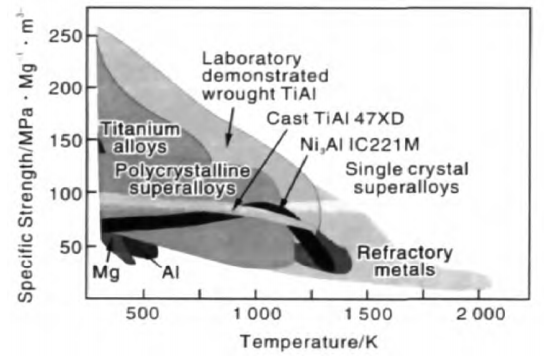
Figure 4 Comparison of Cast TiAl Alloy, Forged TiAl Alloy, and Other Metals

Figure 5 Process Route of Forged TiAl Alloy Blades
Since 2000, foreign countries have begun to use forging technology to manufacture TiAl alloy blades. Rolls - Royce has developed forged TiAl high - pressure compressor blades for stages 7, 8, and 9, which have passed engine test - run evaluations. The third - stage low - pressure turbine blades of the Pratt & Whitney PW1100G engine were equipped on the Airbus A320Neo aircraft, which made its first flight in September 2014, as shown in Figure 6 [24]. In China, the Beijing Institute of Aeronautical Materials, Northwestern Polytechnical University, Beihang University, Nanjing University of Science and Technology, University of Science and Technology Beijing, and other institutions have conducted extensive research on forged TiAl alloys. They have particularly made breakthroughs in a series of key technologies, including the preparation of large - specification, high - purity industrial ingots, can - extrusion for initial blanking, preparation of rectangular - section fine - grain extruded bars, isothermal forging of blades, thin - plate cladding rolling, superplastic forming of complex components, and blade part machining. These achievements have gradually narrowed the gap with foreign countries.
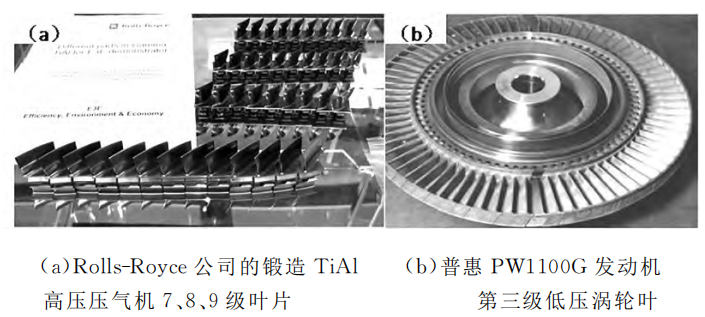
Figure 6 Typical Forged TiAl Alloy Blades Abroad
1.2 High - Temperature - Resistant Coating Materials
1.2.1 High - Temperature Protective Coating Materials
The application of high - temperature materials can greatly improve the high - temperature strength of hot - section components. However, the further increase in the turbine inlet temperature of the new generation of aero - engines has exceeded the melting point of nickel - based single - crystal superalloys. The temperature - bearing capacity of high - temperature alloys can no longer meet the requirements. By combining high - temperature coatings with cooling structures, the operating temperature can reach above 1650℃, ensuring the reliable service of the engine. Therefore, coating the material surface with high - performance high - temperature - resistant protective coatings is one of the effective measures to improve the performance of hot - section components and extend their service life.
At present, the high - temperature protective coatings for aero - engines include thermal - barrier coatings, oxidation - resistant coatings, and internal cavity coatings, which are used to protect the inner and outer surfaces of turbine blades. The coating structure is shown in Figure 7. Thermal - barrier coatings are mainly applied to the outer surface of turbine blades to improve the high - temperature oxidation resistance, corrosion resistance, and thermal insulation of blade materials. Oxidation - resistant coatings are mainly applied to the outer surface of turbine blades to improve the high - temperature oxidation resistance of blade materials. They can also serve as a metallic bond coat for thermal - barrier coatings to improve the interfacial compatibility between thermal - barrier coatings. Internal cavity coatings are mainly applied to the internal cavity of turbine blades to improve the high - temperature oxidation resistance of the internal cavity [25].
1.2.1.1 Thermal - Barrier Coatings
The ceramic layer material of thermal - barrier coatings needs to have important physicochemical characteristics such as refractoriness, phase stability, chemical inertness, low thermal conductivity, and high thermal reflectivity. Meanwhile, the thermal expansion coefficient matching between it and the substrate material should be considered. ZrO₂ is a widely - used thermal - barrier coating material with good comprehensive properties. It has a high melting point, chemical stability, and resistance to high - temperature oxidation. However, pure ZrO₂ undergoes allotropy transformation. With the increase of temperature, it changes from a monoclinic structure to a cubic structure, accompanied by a volume change of 4% - 6%, which generates internal thermal stress. At present, Y₂O₃ is widely used as a stabilizer. It releases the internal thermal stress caused by the mismatch of the thermal expansion coefficient between the intermediate bond layer and the ceramic layer through free expansion and contraction, achieving toughening effect, thereby improving the material's resistance to thermal shock and service life.
In the early 1980s, Pratt & Whitney successfully developed the second - generation thermal - barrier coating PWA264, which was successfully applied to the turbine blades of engines such as JT9D, PW2000, PW4000, and V2500. By 1992, this coating had accumulated more than 4 million flight hours on the turbine blades of JT9D, PW2000, and other engines [26 - 27]. To meet higher temperature requirements, Pratt & Whitney also successfully developed the third - generation turbine blade thermal - barrier coating PWA266. The coating preparation process used EB - PVD, and it was applied to the turbine blades of engines such as JT9D - 7R4, V2500, F100 - PW - 229, and F119. After applying this coating, the working temperature of the high - pressure turbine working blades of the F119 engine can be increased by about 150K [28 - 30]. Up to now, the ceramic layer powder and target material technology for thermal - barrier coatings abroad has been very mature. Research is being conducted on new - type ceramic materials with lower thermal conductivity or on improving existing traditional materials to increase the operating temperature and thermal insulation performance of the coatings.
In the past decade, China has also begun to independently develop YSZ powders for spraying, especially nano - YSZ powders, and has made certain progress. However, the domestically - developed YSZ powders for spraying still have problems such as high Cl⁻¹ content, excessive impurity element content, and poor uniformity of granulation. In addition, nano - YSZ powders also have issues such as large original grain size before agglomeration, poor powder flowability, and spraying processability. The consistency between batches needs to be improved.
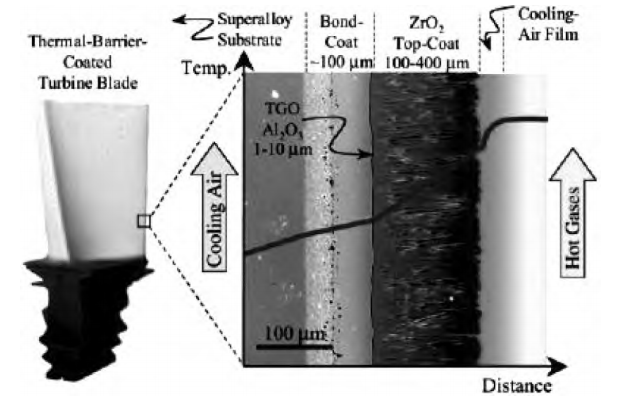
Figure 7 Photograph of the High - Temperature Protective Coating Structure on Turbine Blades
1.2.1.2 Oxidation - Resistant Coatings
The currently reported high - temperature oxidation - resistant coatings that have been applied are mainly MCrAlY (where M is a transition metal such as Ni, Co, or NiCo) and PtAl. The oxidation - resistant mechanism of MCrAlY coatings generally involves the formation of an Al₂O₃ protective oxide layer on the surface in a high - temperature oxidation environment, which prevents further oxidation of the coating and thus protects the substrate. Foreign research on MCrAlY coatings mainly focuses on changing the content of components and adding some elements (Si, Ti, Ta, W, Co, Mo, Hf, Re) or oxides to improve the oxidation and hot - corrosion resistance of the bond layer. PtAl coatings, due to the addition of the noble metal Pt, have better film - forming properties of the protective layer at high temperatures and more prominent self - healing properties of the oxide film. Foreign research on PtAl bond layer materials focuses on the effect of Pt content on its oxidation resistance [31 - 34].
There are still gaps between China and foreign countries in terms of the temperature - bearing capacity and oxidation resistance of high - temperature oxidation - resistant coatings. The MCrAlY coating is currently the most widely - used oxidation - resistant coating in practical applications. The Beijing Institute of Aeronautical Materials, the Institute of Metal Research, the Chinese Academy of Agricultural Mechanization Sciences, and other units have successively developed MCrAlX - based coatings (NiCrAlY, NiCrAl - YSi, NiCoCrAlYTa, and NiCoCrAlY, etc.) for high - temperature protection, which are used to protect engine turbine blades and have entered the small - batch production stage. In China, research on the effect of the relative content of Pt and Al on oxidation resistance has not yet been carried out, and the oxidation resistance of the prepared PtAl bond layer needs to be improved.
1.2.1.3 Internal Cavity Protective Coatings
Internal cavity protective coatings mainly include simple aluminide coatings and improved aluminide coatings. Simple aluminide coatings are produced by simple aluminizing on the substrate of high - temperature alloys and have good oxidation resistance, but their resistance to hot corrosion is insufficient. In the past two decades, foreign researchers have added a small amount of elements such as Cr, Si, and Pt to simple aluminide coatings, including Cr - modified aluminide coatings (Al - Cr coatings), Si - modified aluminide coatings (Al - Si coatings), Pt - modified aluminide coatings (Pt - Al coatings), and rare - earth - modified aluminide coatings (RE - Al coatings) [35 - 37]. These improved aluminide coatings have better hot - corrosion resistance than simple aluminide coatings.
According to available data, the turbine blades of civil aero - engines produced by Pratt & Whitney and CFM International Engine Company have aluminide protective coatings in the internal cavities, which have been applied to engine models such as PW2000, PW4000 - 94, PW4000 - 100, PW4000 - 112, PW4500, PW6000, PW8000, CFM56 - 3, CFM56 - 5, and CFM56 - 7.
Aluminide internal cavity coatings are mainly prepared by solid - powder - infiltration, slurry - infiltration, vapor - infiltration, and chemical - vapor - deposition processes. Chemical vapor deposition is considered the ideal method for preparing internal cavity protective coatings. The United States has completed key technological breakthroughs in the generation control of reaction intermediates in the aluminide deposition process by chemical vapor deposition, effectively realizing the protection of blade internal cavities. GE and Rolls - Royce have used chemical vapor deposition to prepare turbine blade internal cavity aluminide coatings for engines such as GE90, GE90 - 115B, RB211 - 535, and BR700.
Compared with foreign countries, the maturity of domestic technology for complex internal cavity protective coatings on blades still needs to be further improved, and there are significant gaps in the uniformity and protective performance of internal cavity coatings. The coating processes used are mainly traditional pack cementation, slurry infiltration, and vapor infiltration. Research on the application of chemical vapor deposition technology for internal cavity coating preparation is in the development stage.
1.2.2 High - Temperature Stealth Coating Materials
Aero - engines, as significant sources of radar scattering and infrared radiation for combat aircraft, contribute over 95% of the tail - section characteristic signals of an aircraft, including radar scattering signals from the rear cavity and its internal components, edges, and infrared radiation signals from the rear cavity, hot - section components, and exhaust plume. Therefore, the stealth performance of the engine greatly affects the combat capability and survival rate of the aircraft. High - temperature - resistant stealth coatings, as a major technological approach for the engineering application of high - temperature stealth in aircraft, offer several advantages such as minimal impact on the aircraft's shape, simple process, low cost, and high reliability. High - temperature - resistant stealth coatings include high - temperature - resistant infrared, radar, and dual - purpose coatings, which are used on components such as low - pressure turbine blades, straightening plates, mixers, inner cones, and nozzle lips. They achieve stealth effects by reducing the infrared radiation and shrinking the radar cross - section of the target.
Traditional infrared low - emissivity coatings cannot meet the stringent operating conditions of engines. New - type materials such as metal powder coatings, metal films, and inorganic coatings have gradually become the research directions for high - temperature - resistant infrared - stealth coatings abroad. Among them, metal micropowders (mainly including metals such as zinc, aluminum, iron, nickel, copper, silver, gold, and platinum) are widely available and effective. They are one of the commonly used functional fillers in low - emissivity coatings and can achieve full - band infrared low - emissivity effects in the 3μm - 5μm and 8μm - 14μm wavelength bands [38 - 40].
High - temperature - resistant radar - absorbing materials consist of a matrix material and high - temperature - resistant absorbers. Typically, high - temperature - resistant absorbers are dispersed in the matrix material to perform the radar - absorbing function. The most extensively studied and applied abroad are high - temperature - resistant dielectric - loss radar - absorbing materials. The matrix is mainly divided into two categories: ceramic - based matrices (such as Si₃N₄, Al₂O₃, AlN, mullite, ZrO₂, etc.) and glass - based matrices (such as phosphates, Li₂O - Al₂O₃ - SiO₂, Li₂O - B₂O₃ - SiO₂, MgO - Al₂O₃ - SiO₂). High - temperature - resistant absorbers mainly include SiC, Si₃N₄, barium titanate, borosilicate alumina, acetylene carbon black, carbon nanotubes, nano - Si - C - N, Si - C - O, Si - C - Fe, etc. [41 - 42].
Currently, there are mainly two technological approaches to achieve radar/infrared dual - purpose stealth materials:
1. The material itself has high radar - wave absorption and low infrared - emission characteristics (single - type radar/infrared dual - purpose stealth material).
2. Utilizing structural design to combine radar - stealth materials with infrared - stealth materials. The combination maintains the radar and infrared stealth properties of the materials, with little or no change (composite - type radar/infrared dual - purpose stealth material).
However, due to the different mechanisms of radar and infrared stealth, there is a certain contradiction between reducing the infrared emissivity of materials and increasing the radar - wave absorption capacity. This results in mutual constraints on their performance. Therefore, the radar and infrared stealth performance of single - type radar/infrared dual - purpose stealth materials is relatively limited. At present, the development of composite - type radar/infrared dual - purpose stealth materials is more prevalent. Companies such as BTRRLC in the UK, the Materials Research Laboratory of the Defence Science and Technology Organisation in Australia, PUSHGUNTER in Germany, and BAE Systems in Sweden have made significant progress in the development of new - generation radar/infrared dual - purpose stealth coating technologies.
Foreign - made engines for new - generation advanced fighter aircraft have all adopted stealth coating technologies, such as those used in the US F - 22, F - 35, F - 117A, B - 2, and the French Mirage - 2000. The development of high - temperature stealth coating technology abroad started earlier, and many types of coatings have been applied in engineering. The coating and preparation technologies are relatively mature.
Compared with foreign countries, the development of high - temperature stealth coating technology in China started later. There are still many problems in practical applications, such as poor low - frequency stealth performance of radar - absorbing coatings, excessive coating thickness, and insufficient corrosion resistance.
1.3 Medium - and Low - Temperature Materials
1.3.1 Titanium Alloys
### 1.3.1 Titanium Alloys
Advanced aero - engines use titanium alloys in amounts of about 30% - 40%. Titanium alloys are mainly used to manufacture compressor blades, discs, and casings of aero - engines. Replacing steel and nickel - based alloys, they can reduce weight by about 40%, significantly improving the thrust - to - weight ratio and work efficiency.
At present, the titanium alloys mainly used in Chinese aero - engines are α + β - type titanium alloys, which have good hot - working properties and good comprehensive properties in medium - temperature environments. Their working temperatures are mostly below 500℃. Among them, titanium alloys used below 400℃ mainly include TC4, TC6, and TC17, which are used in fan blades and low - pressure compressor blades with lower working temperatures in engines. Titanium alloys working around 500℃ include TC11, TC25, TA15, and TA7, among which TC11 is the most widely - used titanium alloy in Chinese aero - engines [43 - 44].
With the increasing temperature requirements for engine components, titanium alloys that can be used at 600℃ have been developed, such as Ti60, as well as foreign alloys like IMI834, Ti - 1100, BT36, and BT41. Foreign 600℃ titanium alloys have been widely applied. For example, IMI834 is widely used in the third - stage integrally - bladed disk and partition of the high - pressure compressor of the EJ200 engine and the rear casing of the high - pressure compressor of the F119 engine.
The development trend of titanium alloys is shown in Figure 8. The use temperature is increasing. The strengthening technology of titanium alloys is evolving from sol


 微信公众号
微信公众号
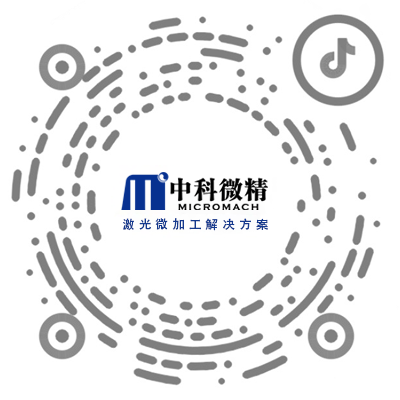 抖音
抖音
 视频号
视频号